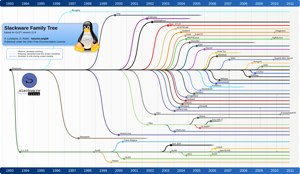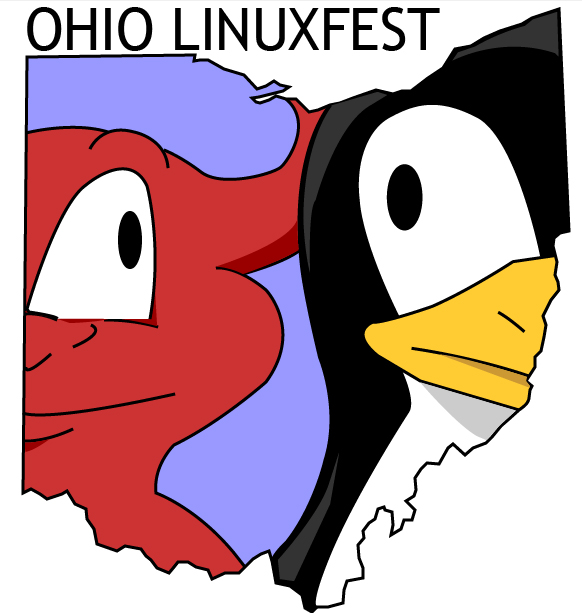The Linux world is vast, and extends far beyond Linus. Here is a second batch of talented, creative people doing wonderful things with Linux and FOSS; a followup to Unsung Heroes of Linux, Part One. There are literally thousands of contributors doing excellent work that benefits all of us, and it’s high time to start saying, “Thank you.”
Terry Hancock, Lib-Ray and Free Culture

Terry Hancock is a busy lad who finds time to be a Free Culture advocate, write for Free Software Magazine, produce Lunatics!, translate for the Morevna Project, write books, and gosh knows what-all. I think one of his most significant projects is developing Lib-Ray, the DRM-free open-standards HD video format. Did you know that you cannot release a DRM-free movie in Blu-Ray? Because Blu-Ray is incurably bound and walled with restrictions and encumbrances. Lib-Ray is designed to offer all the high-definition quality of Blu-Ray without the restrictions, and with more features and flexibility.
Figure 1: Advanced language handling in Lib-Ray, using region encoding for something good instead of more restrictions.
The movie industry is incurably broken, so thanks to people like Terry we’re getting high-quality tools to bypass them entirely.
Valerie Aurora
Valerie is a kernel hacker, writer, activist for women in tech, and author of the wickedly funny Valerie Aurora meets the Honeywell H316 Kitchen Computer. Valerie was the primary architect and developer of ZFS, published the first warnings of the weaknesses of cryptographic hashes, and wrote a number of excellent, informative kernel columns for Linux Weekly News.
Valerie is co-founder of the Ada Initiative with Mary Gardiner. The Ada Initiative, named for Countess Ada Lovelace, the very first computer programmer, is dedicated to increasing participation of women in open technology and culture. It takes a lot of courage to do this because the backlash and denial are always ferocious. Even if it is true, as so many like to claim, that it’s a minority of bad actors in the Linux world, it is certainly true that the majority does little to address the problem. The Ada Initiative is the first high-profile non-profit to tackle it head-on.
The Ada Initiative has launched several programs since its founding in 2011: Adacamp conferences, surveys, consulting, workshops, and over 30 conferences have adopted anti-harassment policies. Many more programs are in the planning stages.
Patrick Volkerding, Slackware
If you’re thinking “Hey, Patrick Volkerding is not unknown!” you’re right. I had to include Patrick because Slackware doesn’t get breathless buzz like the glamorous Linuxes; it just keeps chugging along being rock-solid and excellent, without drama. Slackware is one of the oldest Linux distributions, and has the rare distinction of having the same leader and maintainer throughout its existence, founder Patrick Volkerding.
 Slackware was born around 1993 as a cleanup of the popular Softlanding Linux System (SLS), which was one of the very first Linux distributions. (Which is pretty amazing when you consider that Linus’s first famous message announcing his new kernel was posted a mere two years previously, in 1991.) Slackware is as close to vanilla Linux as you can get, with minimal changes to upstream sources. It is simple in design and expects the user to know how to use the command line and edit configuration files. You won’t find gratutious “improvements” in Slackware, so once you know your way around it you can count on things staying put, and not being changed without a good reason.
Slackware was born around 1993 as a cleanup of the popular Softlanding Linux System (SLS), which was one of the very first Linux distributions. (Which is pretty amazing when you consider that Linus’s first famous message announcing his new kernel was posted a mere two years previously, in 1991.) Slackware is as close to vanilla Linux as you can get, with minimal changes to upstream sources. It is simple in design and expects the user to know how to use the command line and edit configuration files. You won’t find gratutious “improvements” in Slackware, so once you know your way around it you can count on things staying put, and not being changed without a good reason.
Slackware is influential and has spawned quite a few descendants, including SUSE in its early days (figure 1). Wolvix, NimbleX, Frugalware, Slackintosh, and Vector Linux are some of the more popular Slackware derivatives.
Figure 2: The Slackware family tree. (Image courtesy Andreas Lundqvist, Donjan Rodic, Wikimedia Commons)
Clem Lefebvre, Linux Mint
KDE suffered a bumpy, disruptive transition to KDE4, the GNOME team have a history of throwing away everything and starting over just when it’s starting to mature into something really nice, and Ubuntu’s Unity has been just as disruptive, so the past few years have been rough on large numbers of Linux users. Clem Lefebvre’s Linux Mint distribution has won the hearts of many, and has topped the Distrowatch ranking for over a year. I know, the Distrowatch ranking is not all scientific and über accurate, but it is a good indicator of trends, and Ubuntu fans liked it just fine as an authority when Ubuntu dominated the No. 1 position for several years. Some of us less-classy persons might also enjoy a little snark at the idea of Clem and his little team toppling the giant, well-funded Canonical organization.
Mint 13, LMDE (Linux Mint Debian Edition), is based on Debian and offers two, count ’em, two Gnome customizations: MATE and Cinnamon. MATE is a fork of GNOME 2, and Cinnamon makes GNOME 3 look like GNOME 2. It’s a fair bit of work to keep GNOME 2 alive, and Mint is attracting a whole lot of happy users.
Raspberry Pi
I featured the Raspberry Pi in Tiny Pluggable Linux ARM Computers Are Red-Hot. The Raspberry Pi is a tiny hackable single-board ARM computer that costs a mere $35. The idea was to create a tiny, cheap computer for kids, something they could learn some actual skills on instead of merely being button-clickers. I love this phrase on the Raspberry Pi About page: “the colonisation of the ICT curriculum with lessons on using Word and Excel.” The people behind the Raspberry Pi are Eben and Liz Upton, Rob Mullins, Jack Lang, Alan Mycroft, Pete Lomas, and David Braben.
Developing and manufacturing the Pi was quite a process, taking several years and a lot of help. The fine Pi folks don’t expect to change the world, but they do hope to be a catalyst for cheap, accessible computing and programming everywhere.
Pamela Jones, Groklaw
The epic SCO wars are over, a testament to how having deep pockets can game the courts and keep baseless litigation going for an absurd length of time. There were few tech or business journalists capable of reporting knowledgeably on the SCO lawsuits, and instead of good informed reporting we got random dueling “experts”, analysts who were in way over their heads, and a strong slant towards SCO. Because it was nice clean people in suits vs. those dreadful FOSS hippies, because SCO had the mouthy, over-confident CEO Darl McBride, the glamorous star lawyer David Boies, and because it did not seem credible that a little company like SCO would take on IBM, Novell, AutoZone, and Chrysler without having a solid cause of action. (If you’re wondering “what about Red Hat”, Red Hat sued SCO.)
Pamela Jones showed early that the Darl had no clothes, engaged and educated an entire community on matters of copyright law, and how to obtain and understand court filings and other source documents. The high drama of SCO is over, but Groklaw continues to analyze and report on legal issues that affect Linux and FOSS, continuing its missions of providing “a place where lawyers and geeks could explain things to each other and work together, so they’d understand each other’s work better.”
Community Linux Fests
 The big glitzy commercial Linux cons and tradeshows are fun, and the community fests are even funner. They have free or low-cost admission, and more opportunities to participate. Some are big, some are small, and they’re a great way to meet your fellow Linux fans and learn a lot of cool stuff. It’s an enormous job to host one of these, so it is truly a labor of love.
The big glitzy commercial Linux cons and tradeshows are fun, and the community fests are even funner. They have free or low-cost admission, and more opportunities to participate. Some are big, some are small, and they’re a great way to meet your fellow Linux fans and learn a lot of cool stuff. It’s an enormous job to host one of these, so it is truly a labor of love.
Figure 3: Ohio Linux Fest logo
Southeast Linux Fest
Texas Linux Fest
Ohio LinuxFest
SCALE
LinuxFest Northwest
Indiana Linux Fest
Northeast Linux Fest





